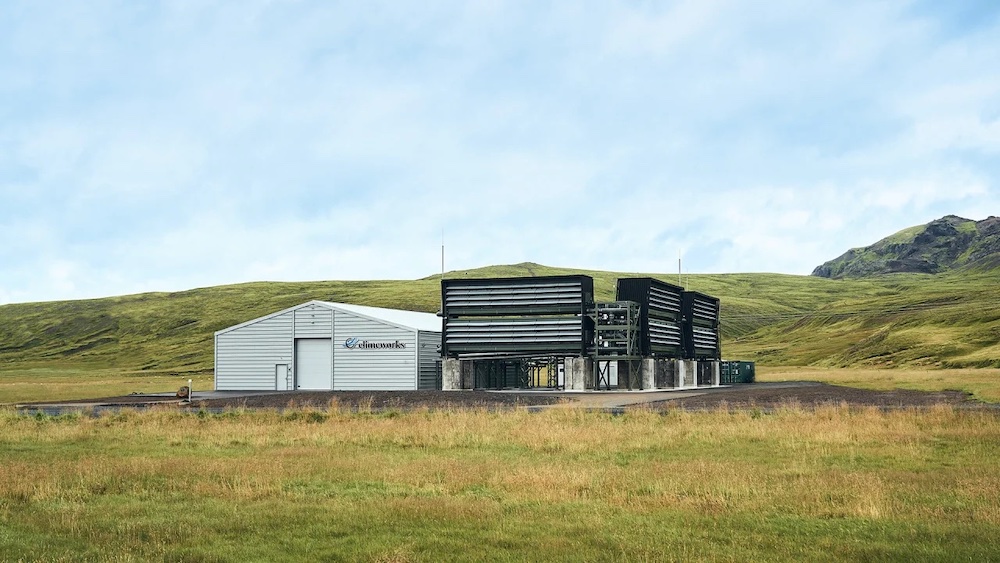
- Details
- By Mark Fogarty, Global Ocean Health
- Opinion | Op-Ed
Guest Opinion. Is the development of the carbon removal and greenhouse gas reduction industries offering Indian Country a compelling opportunity to take charge of its own economic destiny and to throw off Native reliance on the assistance of the federal government? Many Natives in economic development activities think so.
“I know it is,” said Donald Williams, a member of the Confederated Tribes of the Umatilla Reservation and founder of From the Light LLC, an Oregon-based tribal member owned energy consulting firm.
“Absolutely,” agreed Cindy Logsdon, CEO of the Citizen Potawatomi Community Development Corp. in Shawnee, Okla. “Yeah, absolutely.”
Several members of the Seattle-based Building Tribal Leadership in Carbon Removal’s Indigenous Strategy Group (ISG), including Williams, are thinking along these same lines, although they spoke off the record. (BTL is a unit of non-profit Global Ocean Health).
“With the right structure and the right implementation and the right tribal buy-in and approach, I know it’s more than economically viable,” said Williams, in a separate interview.
Williams said it would require non-tribal stakeholders and assistance, but noted that a 51 percent tribal share makes any project a tribally-controlled project.
“It’s there. When you’re talking about economic projects in the $1 billion range, that really provides a lot of economic viability,” Williams said, adding that the federal Greenhouse Gas Reduction Fund is “a beautiful mechanism.” He said the federal aim with this legislation is to form the kind of collaborative tribal/non-tribal relationships he is talking about.
“It’s just a matter of getting the synergy together,” he said.
It is certainly possible. Getting in on the ground floor of climate change-related environmental technologies (such as carbon removal) and asserting a lead role in the development of these forward-looking and culturally connected practices could give tribes the opportunity to achieve the economic sovereignty they have been looking for and talking about for many years.
But for this to happen, it is clear to Natives and non-Natives alike that tribes must get access to capital on a far larger scale than they have ever done before. Private money and funding from public-private partnerships controlled by tribes will be essential to this endeavor, in addition to money provided by tribes themselves through their economic development activities and, in junior-partner status, from the federal government.
This new Native capital market will develop based on changing market conditions just as all capital markets evolve, but it is possible to see some of the financing mechanisms now and to extrapolate on some potential others that can be housed under tribal control. I base this on many years of reporting on Native finance.
A key starting point of a Native-specific funding source is the Native community development financial institution (Native CDFI). Potential enhancements to that structure include combinations with depositories, leveraging into other pots of money, and supercharged coalitions that can reach for the scale needed to leverage the power of these small, localized institutions into economic powerhouses.
In existing economic infrastructure, the leveraging of tribal utilities such as at Morongo Transmissions LLC in California can provide a powerful base and model for expanding out into new energy ventures.
In the traditional national finance arena, bond finance is vastly underused in Indian Country, partly due to regulations that limit what tribal governments can finance as opposed to other municipal governments. (They are prohibited against using tax-exempt bonds for anything but “essential government functions.”)
But Morongo has tapped the bond market for an undisclosed percentage of the $400 million they raised for a partnership with Southern California Edison.
And Citizen Potawatomi CDC of Shawnee, OK got a $16 million piece of a $127 million CDFI Bond Guarantee Program, to build an arena and manufacturing facility on its homelands.
Some intriguing models that can be further leveraged are underway already in Indian Country. Here are a few of them:
McKINLEY ASSET GROWTH MANAGEMENT. This Anchorage-based Native CDFI has not only tapped the federal CDFI Fund for money, but also earned a second designation, a CDE (Community Development Entity) to allow it to access the separate New Markets Tax Credit. With $10 million in CDFI Fund financing and $120 million of tax credits it has sold to private investors, according to its website, it has financed a growing number of projects in rural Native Alaska, Hawaii and the Northwest.
NATIVE CDFI NETWORK and OWEESTA CORP. These two entities have leveraged the power of individual Native CDFIs, which tend to be quite small, into coalitions of dozens of members that can leverage their combined power. Oweesta is also an “intermediary” lender to its network of institutions, providing additional liquidity, and NCN has just become an intermediary lender and is in the running for $800 million in Green Bank money.
QUALCO ENERGY BIOGAS PROJECT. The Tulalip Tribes of Washington are a good example of how existing or future tribal utilities can access finance for the clean energy world. Pairing with two partners, their plan is to use technology by Modern Hydrogen to generate hydrogen fuel (supplying power customers) and powdered carbon black. They have secured bond financing at low rates to accomplish this.
Mark Fogarty has been covering tribal financial institutions for thirty years. This opinion piece was commissioned by Global Ocean Health, a Seattle-based organizer of the scientific, policy, and communications support tribes need to stand up for the sea that feeds an estimated three billion people. The essay is part of a research project to explore potential for tribes to finance their initiatives in carbon removal.